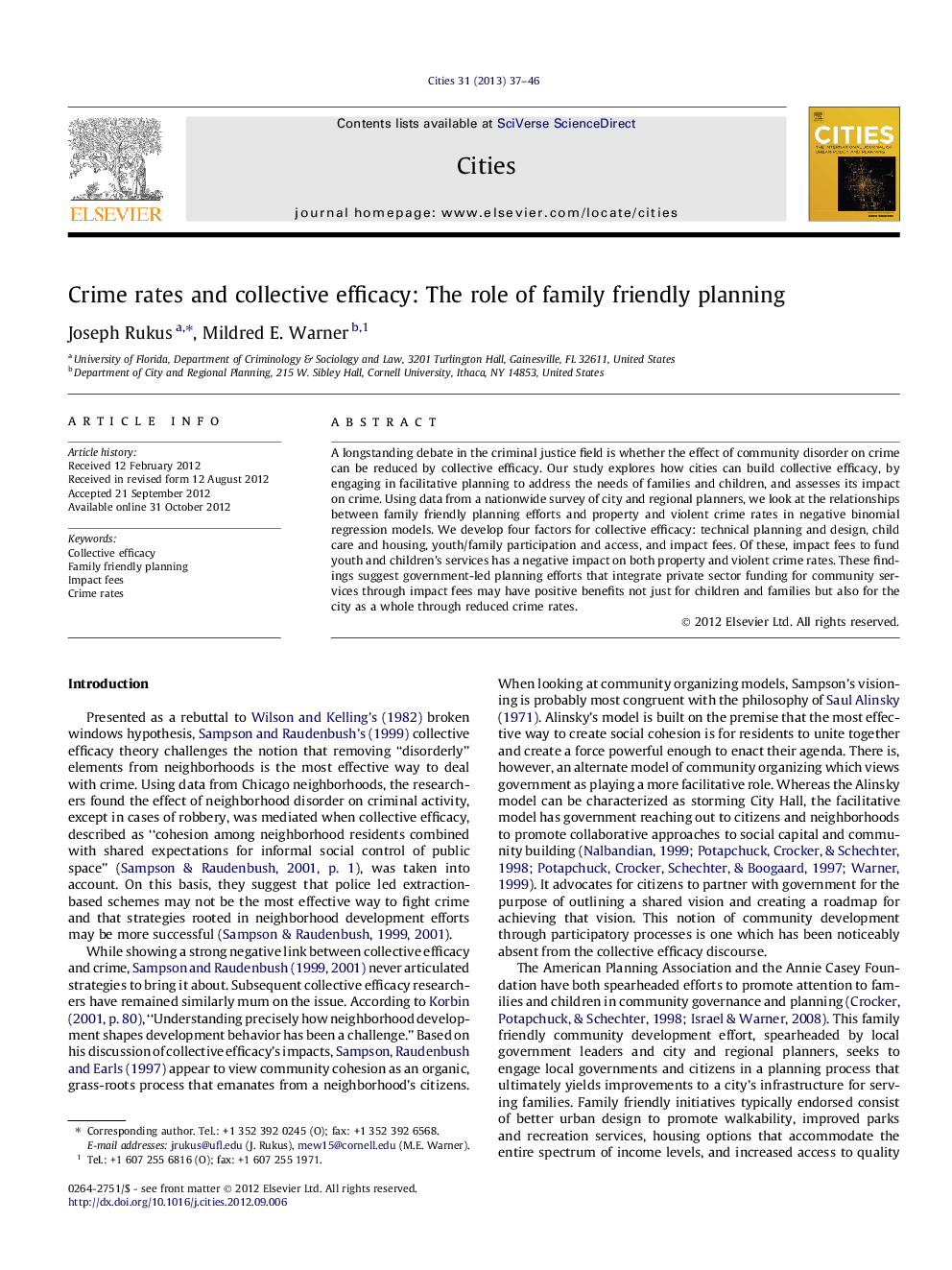| کد مقاله | کد نشریه | سال انتشار | مقاله انگلیسی | نسخه تمام متن |
|---|---|---|---|---|
| 1008499 | 1482363 | 2013 | 10 صفحه PDF | دانلود رایگان |

A longstanding debate in the criminal justice field is whether the effect of community disorder on crime can be reduced by collective efficacy. Our study explores how cities can build collective efficacy, by engaging in facilitative planning to address the needs of families and children, and assesses its impact on crime. Using data from a nationwide survey of city and regional planners, we look at the relationships between family friendly planning efforts and property and violent crime rates in negative binomial regression models. We develop four factors for collective efficacy: technical planning and design, child care and housing, youth/family participation and access, and impact fees. Of these, impact fees to fund youth and children’s services has a negative impact on both property and violent crime rates. These findings suggest government-led planning efforts that integrate private sector funding for community services through impact fees may have positive benefits not just for children and families but also for the city as a whole through reduced crime rates.
► Using national survey data, we model collective efficacy’s impact on crime rates.
► We define collective efficacy as planning, participation and funding family services.
► Cities with more collective efficacy (family friendly planning) have less crime.
► Community disorder is positively associated with crime.
► Cities that use developer impact fees to fund community services have less crime.
Journal: Cities - Volume 31, April 2013, Pages 37–46